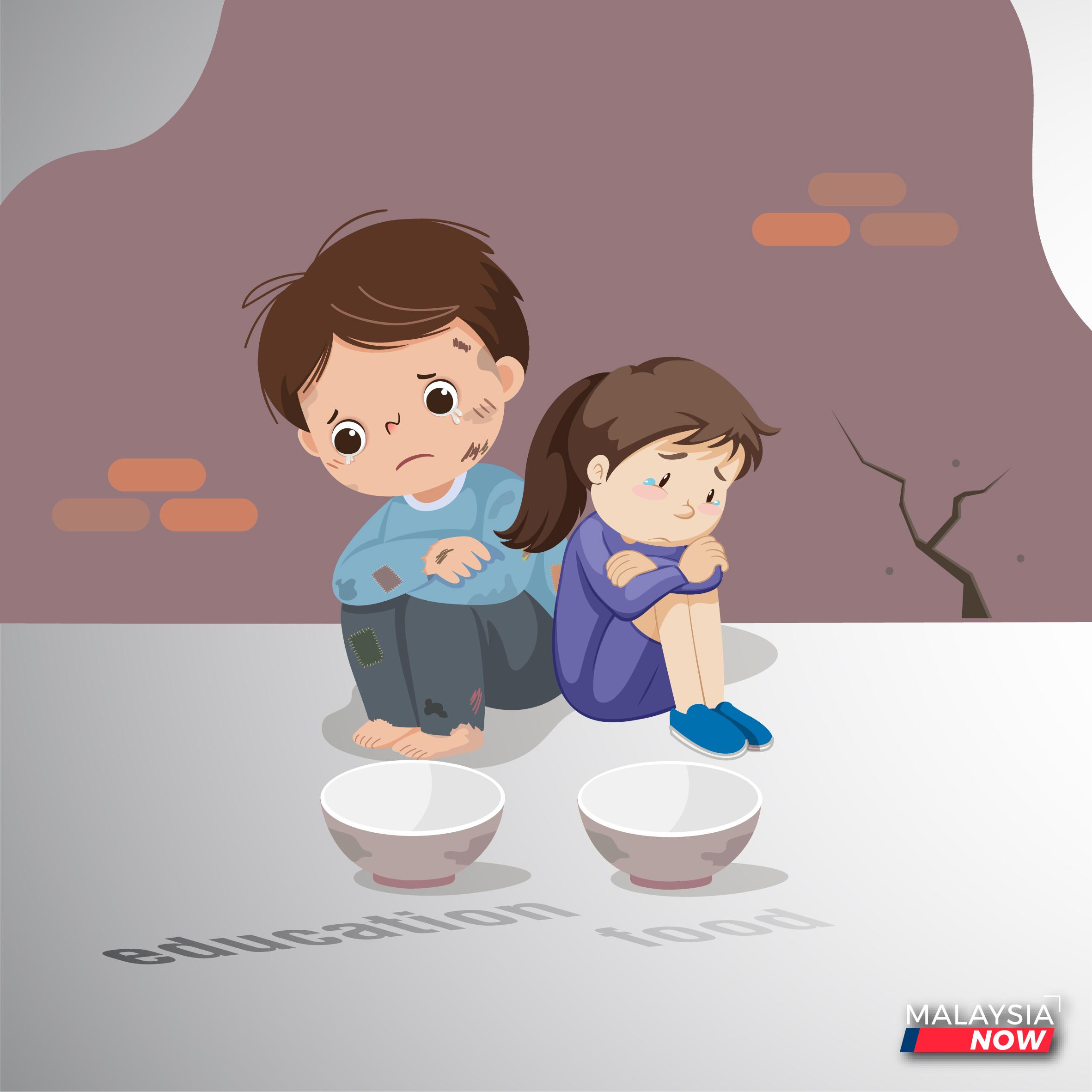Breaking the lethal cycle of child poverty
Perhaps the only way out for children living in hardcore poverty is education.
Just In
In the living room of a humble apartment unit at a low-cost housing area in the city, a couple sit side by side on the shabby sofa, recalling the death of their child several years ago.
The little girl was by herself at the time – her father had gone to work and her mother was settling her older sister at school.
Alone in the apartment, she fell to her death from one of the open windows.
Today, her parents continue to grieve their loss. But as they speak about their daughter and the way in which she died, there is also an air of fear and concern overhead.
It is a struggle for the mother to admit that she cannot afford a babysitter to take care of her children while she and her husband are away from home.
Whenever she takes the older children to school, or runs out to buy food, the younger ones wait for her return alone. She cannot take them with her as she goes out on foot – there is no money for a car.
She has tried asking her neighbours to keep an eye on them while she is gone, although she does not have the money to pay them for their time and trouble.
But busy with their own affairs, they grew increasingly surly about her requests, and soon, she learnt to stop asking for help.
The father, meanwhile, says he must work harder to give his family a better life.
“I need to make sure that none of my other children die like this,” he says.
Child poverty
In Malaysia, the national mean poverty line income is RM2,208 for households and RM1,169 per household for the hardcore poor.
The World Bank estimates that some 5.6% of Malaysian households are currently living in absolute poverty.
But the issue of child poverty – the state of children living in poverty including children from poor families and orphans being raised with limited or no state resources – is a less widespread subject.
According to economist Mohd Afzanizam Abdul Rashid, there is no accurate data to define child poverty in Malaysia.
Nevertheless, he said, the issue exists and can be seen in the lifestyle, income and state of households which he described as an ever-growing dimension of poverty.
“How big the problem is exactly, I cannot say without concrete data. But anecdotal evidence shows that it does occur,” he said, adding that a comprehensive policy will be needed to solve it in urban and rural settings alike.
Education and nutrition
Afzanizam of Bank Islam said child poverty is closely linked to other issues including poor nutrition, a lag in studies, lack of access to the devices needed for online classes, and period poverty.
For him, the best weapon against it is education.
Since the onset of Covid-19 in the country, he said, many aspects of education had been hampered due to the need for online learning – and with them, the development of students themselves.
“It is a given that those without access will be left behind in terms of their studies,” he said.
“The question now is how to get these children back on track.”
There is also the problem of nutrition.
For many students from poor families, schools are the best platform for the provision of healthy meals. The closure of schools throughout the country due to the Covid-19 pandemic meant that these students were deprived of perhaps the only nutritious meals they had received.
Now that the country has begun the transition to the endemic phase, schools have reopened once more.
Afzanizam said it was the responsibility of school managements to ensure that the meals provided are up to standard in terms of quality and nutrition.
“Schools are the best platform for covering the aspects of education and nutrition,” he said.
But helping children break free from the often lethal cycle of poverty cannot be done overnight. In the meantime, families struggling to get by do what they can to make it to another day.
Back in the small living room of their low-cost flat, the father who lost his little girl stops talking about the practical considerations of work and money and gives in to his emotions.
“It doesn’t matter,” he says. “If she were still alive, she would have nothing but a hard life anyway.”
Subscribe to our newsletter
To be updated with all the latest news and analyses daily.
